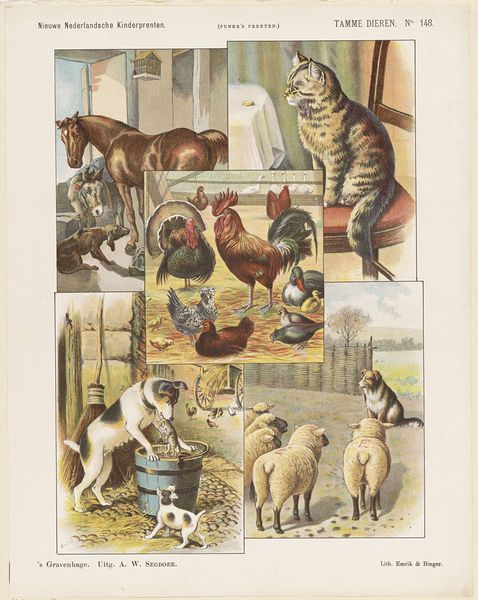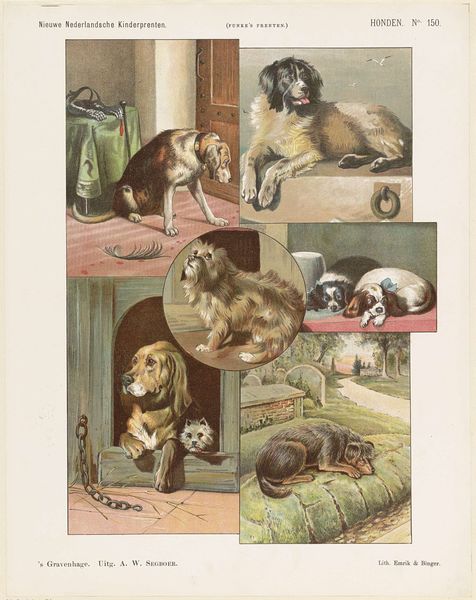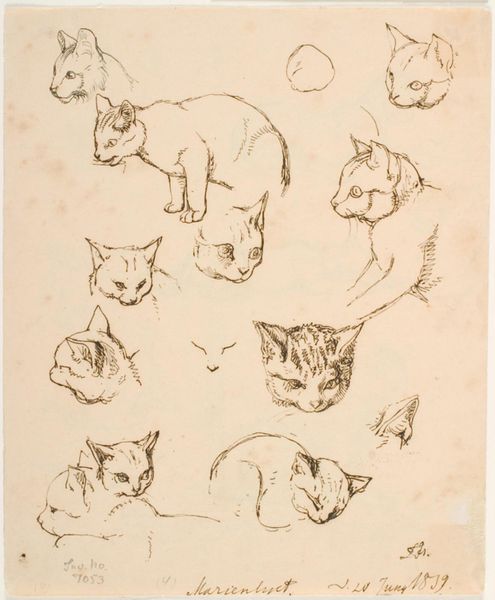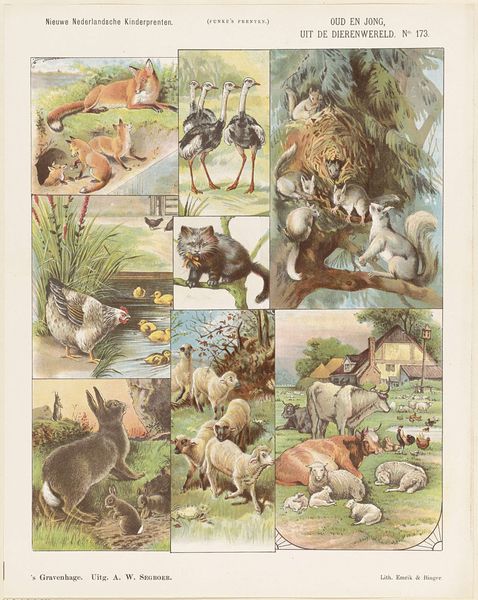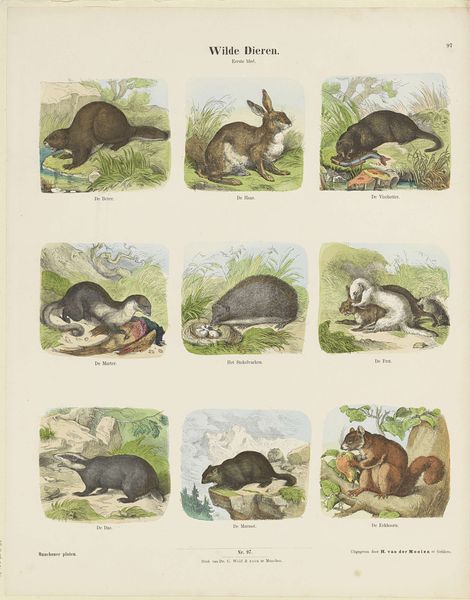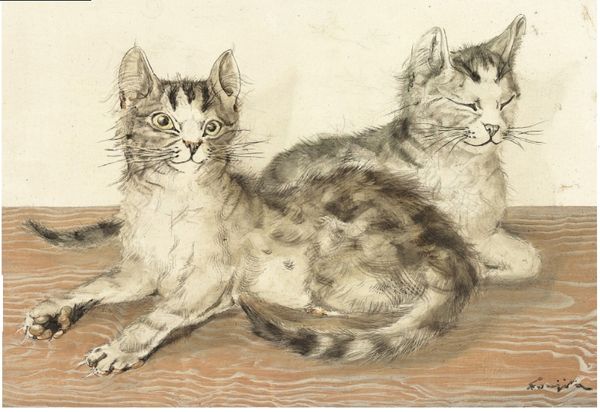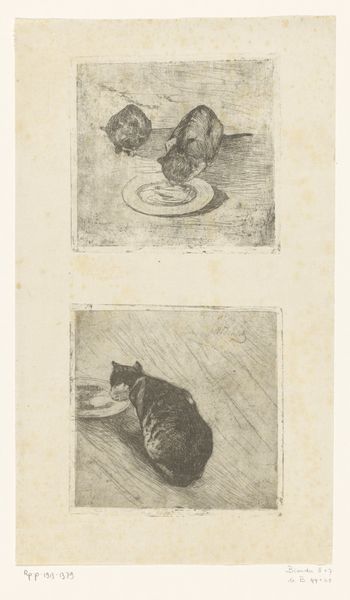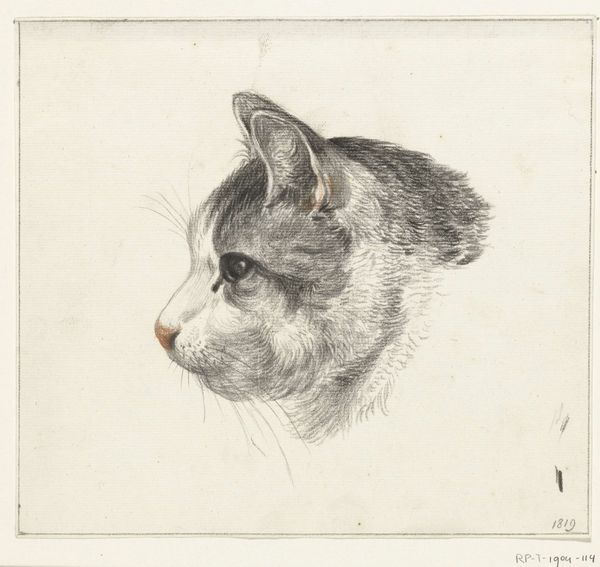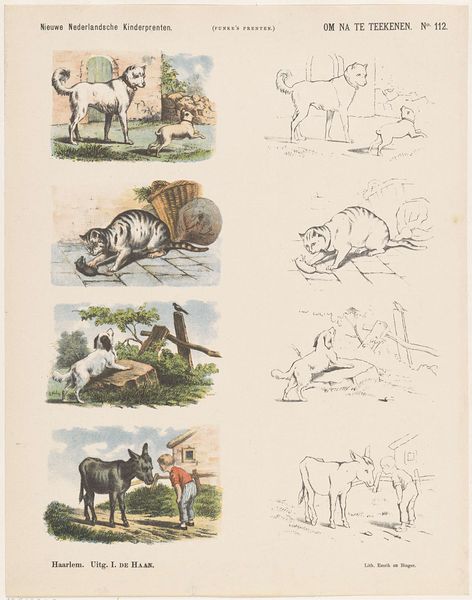
print, watercolor
# print
#
watercolor
#
watercolour illustration
#
genre-painting
#
watercolor
Dimensions: height 441 mm, width 346 mm
Copyright: Rijks Museum: Open Domain
Editor: We're looking at "Het leven en bedrijf der katten," or "The life and business of cats," a print and watercolor piece, likely from between 1843 and 1920, by Hermann van der Moolen. It's essentially a page filled with vignettes of cats in various activities. I find it quite charming. What strikes you most about this collection of feline snapshots? Curator: It's a fascinating piece because it encapsulates how the 19th century increasingly viewed animals – not just as utilitarian creatures but as subjects worthy of observation and, dare I say, anthropomorphism. Genre painting, depicting everyday life, became incredibly popular, and here we see it applied to the domestic sphere of cats. The scenes feel very staged and moralistic, though. Does that resonate with you? Editor: I see that! It’s like little morality plays acted out by cats. Like the cat perched precariously on the vase, or the cat cornering a mouse. Are these scenes designed to reflect certain human behaviors, through cats? Curator: Precisely. Think of the burgeoning middle class, the rise of pet ownership, and the sentimentalization of domesticity. This print catered to that market, subtly reinforcing societal norms. Cats, already associated with independence and mystery, now also become symbols of family life and perhaps even gentle satire. Consider the ways in which social satire has been applied to animal protagonists in other artworks through history. What visual cues do you notice that support this interpretation? Editor: The detail! Look at how the artist meticulously renders the cats' fur and their expressions, making them relatable, even comical. It speaks to a public who had the time and interest to appreciate such detail. It’s interesting to consider the print as a commodity, too – a reflection of social trends in its time. Curator: Absolutely. And that detail made it easier for the viewers of the time to recognize in these animals those behaviours and types that amused and comforted them in the increasingly impersonal urban spaces. Editor: That definitely broadens my understanding of the work beyond just cute cats. I now appreciate how it reflects broader societal values and the cultural context of its time. Thanks!
Comments
No comments
Be the first to comment and join the conversation on the ultimate creative platform.

